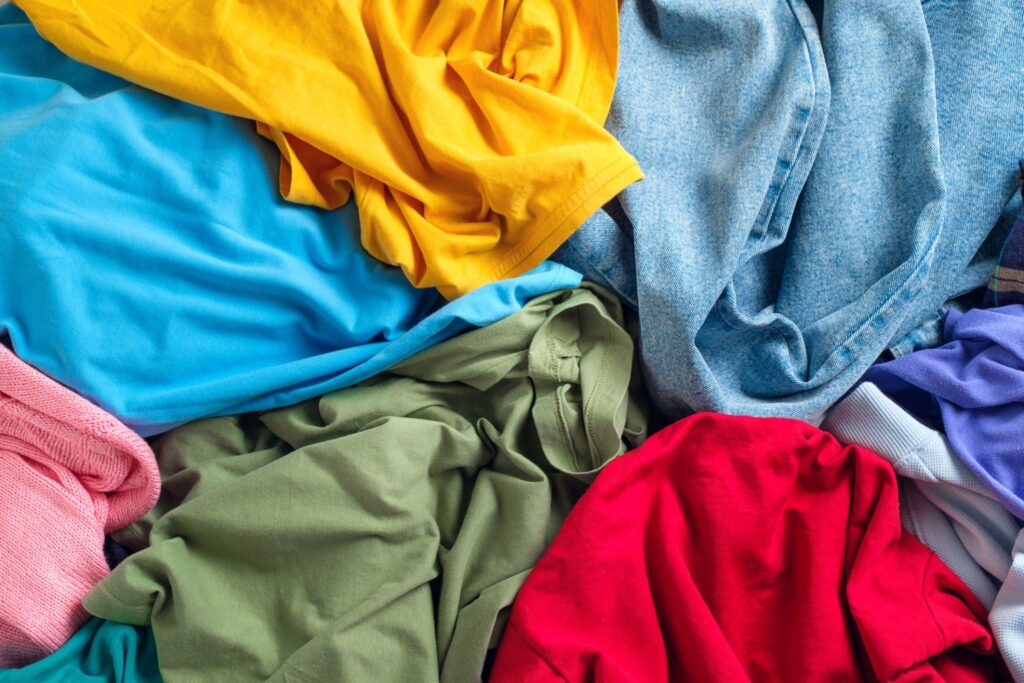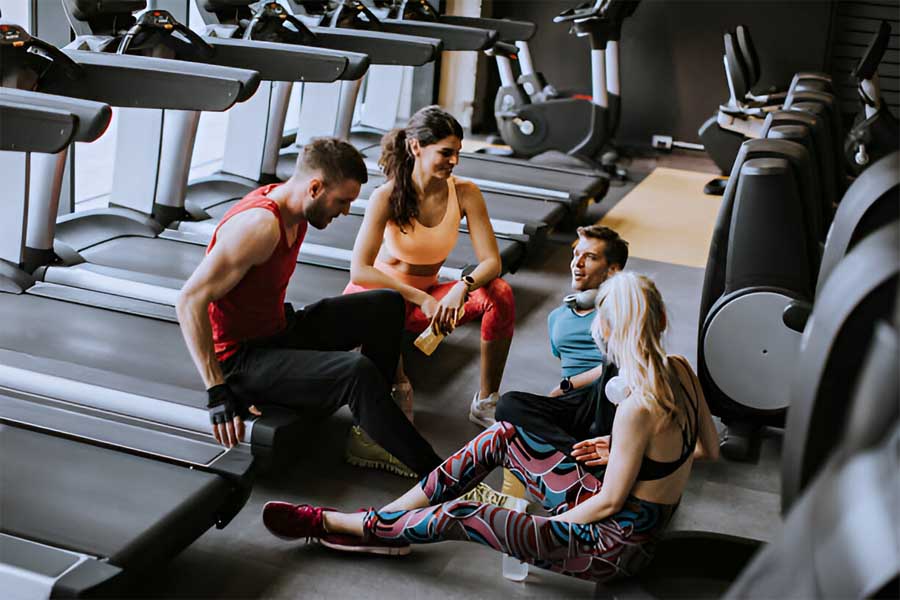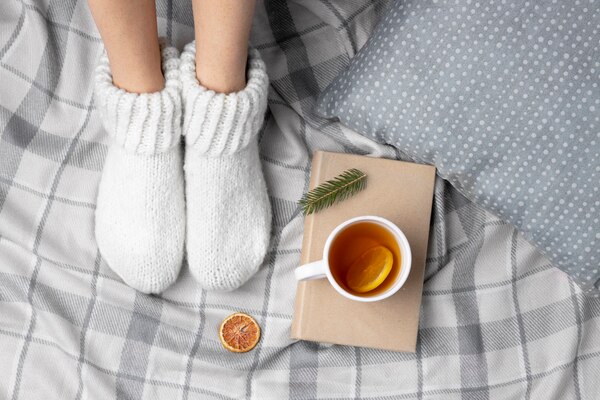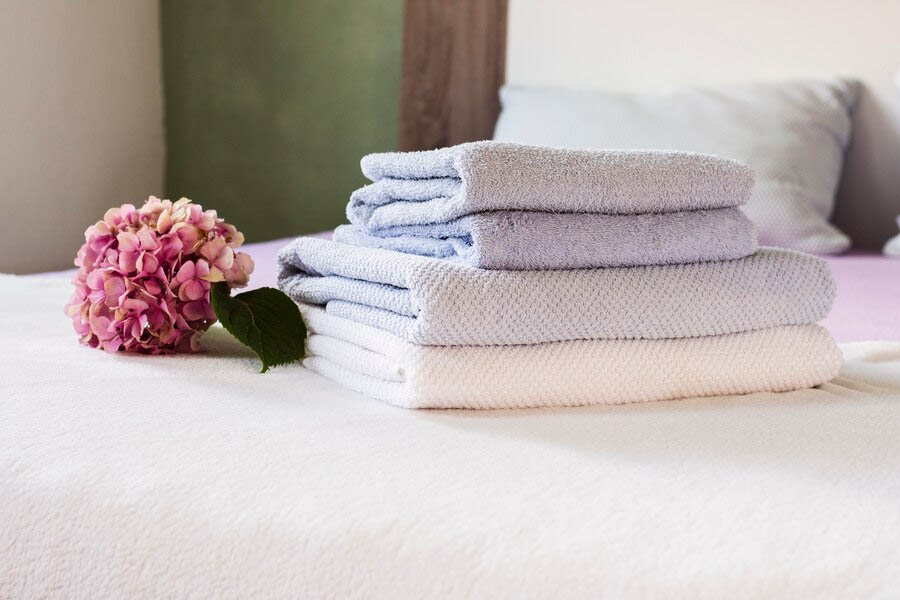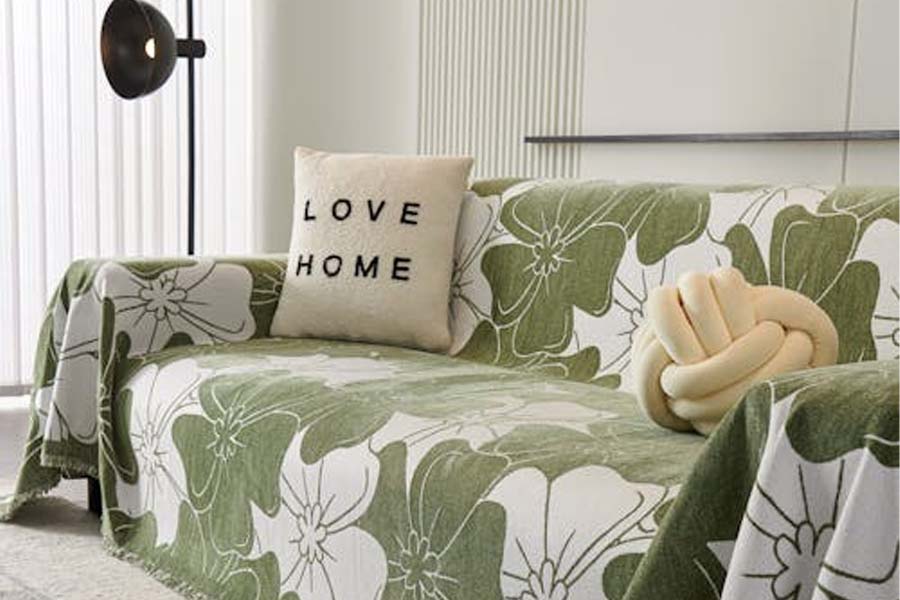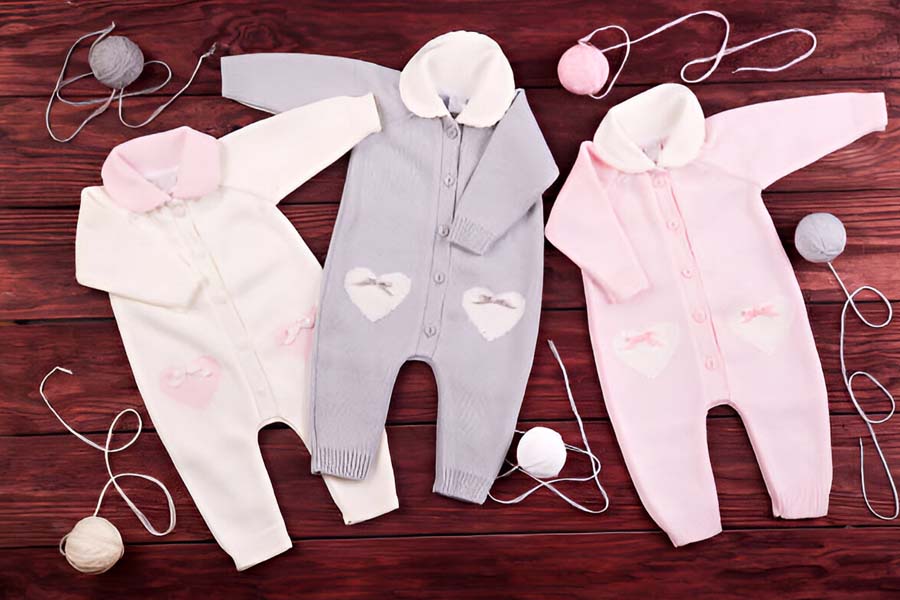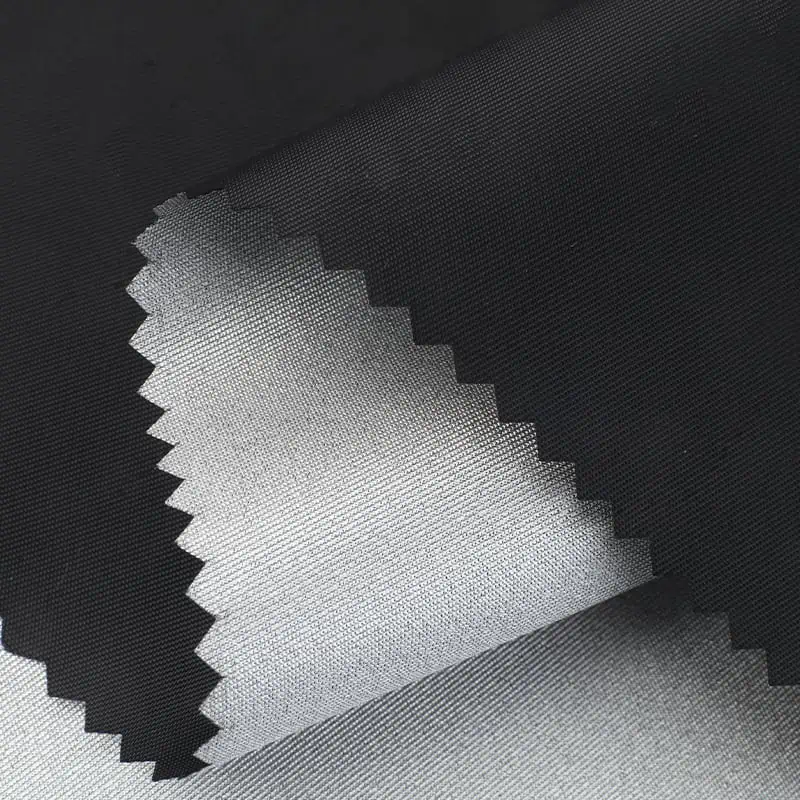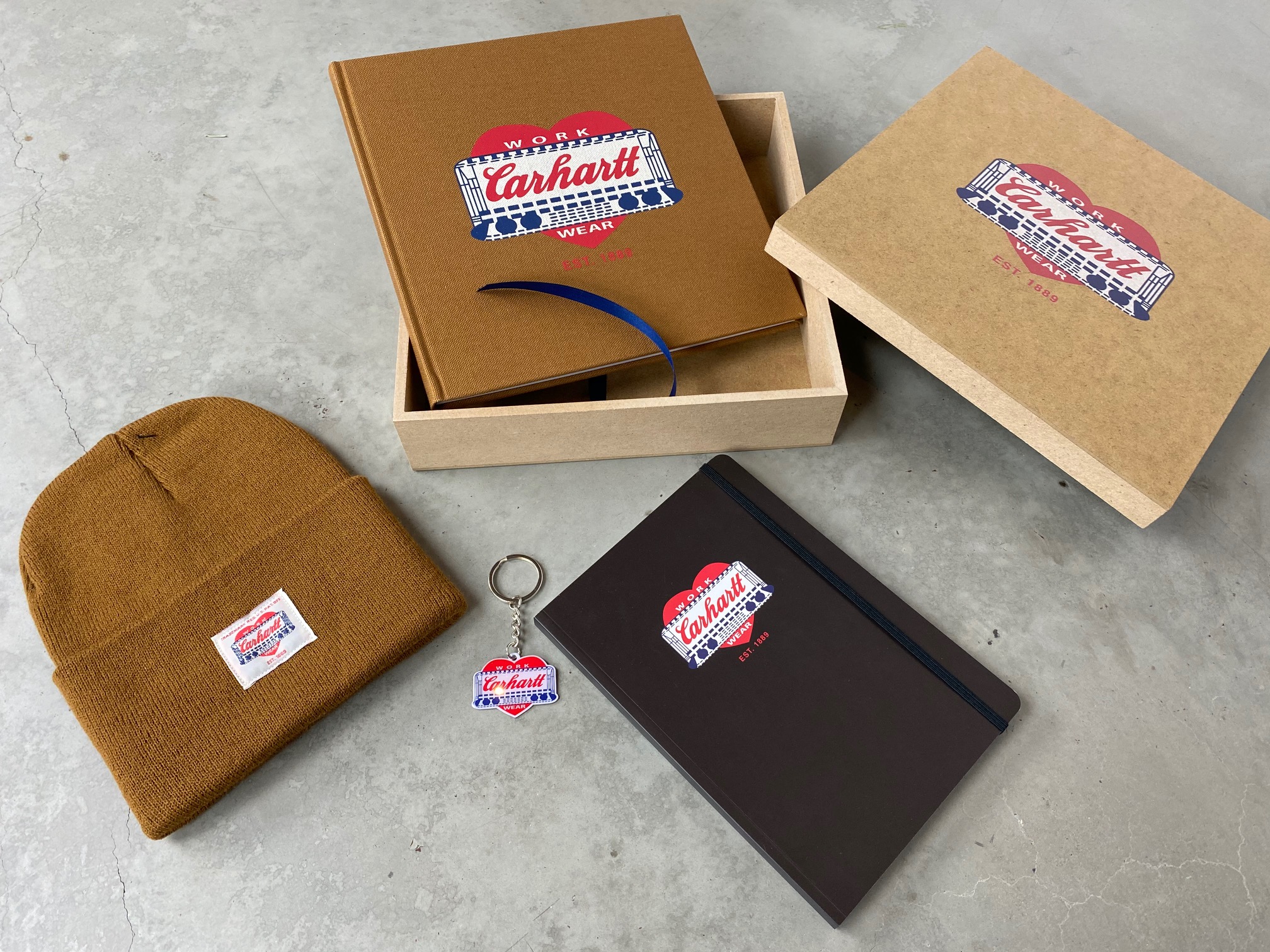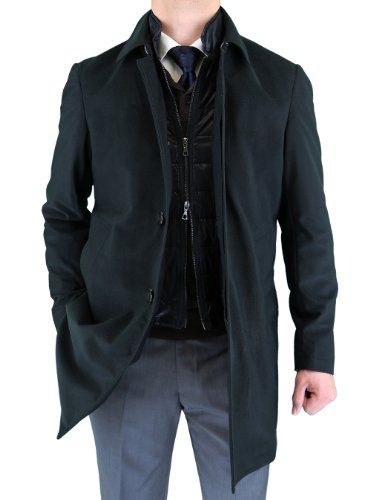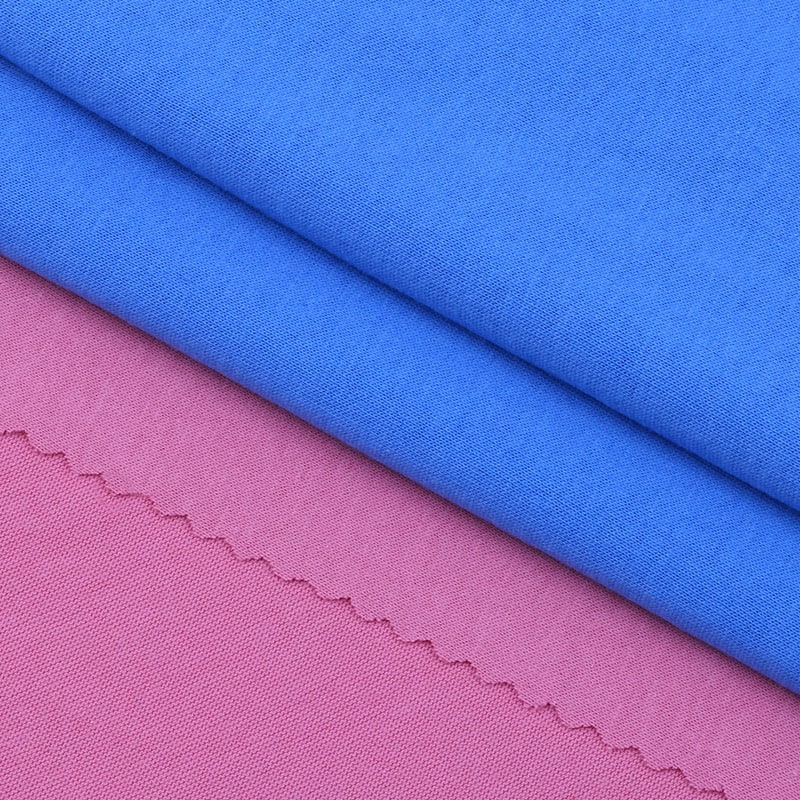Shirts for men are plain, short-sleeved shirts, and shirts that include a button-down and collar. So one shirt can make or break an outfit, and the right one is critical. Whether going to a casual or formal event, the correct shirt can complete the look.
Few brands offer pieces that are versatile and comfortable to wear. So it’s critical to expand your range and boost your brand’s reputation for quality and style.
If you’re deciding what shirts for men to include in your wardrobe, you need to learn everything about them. We’ve covered everything, from shirt textures to origins and how to style them, so scroll down to read more.
Different Types of Shirts for Men
Men seek different styles and types of shirts that diversify their wardrobe. Decide which shirt best suits you by reading about them here:
1. Oxford Shirt

Source: iStock
The Oxford shirt is iconic and the Oxford fabric is made using a traditional weaving process. Because of its cotton material and breathable qualities, polo players preferred wearing it on the field. When the men’s shirt continued to roll up, they added buttons to secure it in place.
These shirts for men is a wardrobe staple. Since it holds its shape well, it is wrinkle-resistant and airy. While newer Oxford shirts are made of polyester or synthetic material, the classic Oxford is 100% cotton. The fabric makes it cool to wear.
So level up your office look by pairing your Oxford shirt with linen pants and loafers. Or, if you want a smart-casual aesthetic for this shirt, top it off with a knitted vest. That way, you’ll still feel comfortable while looking your best.
2. Poplin Shirts
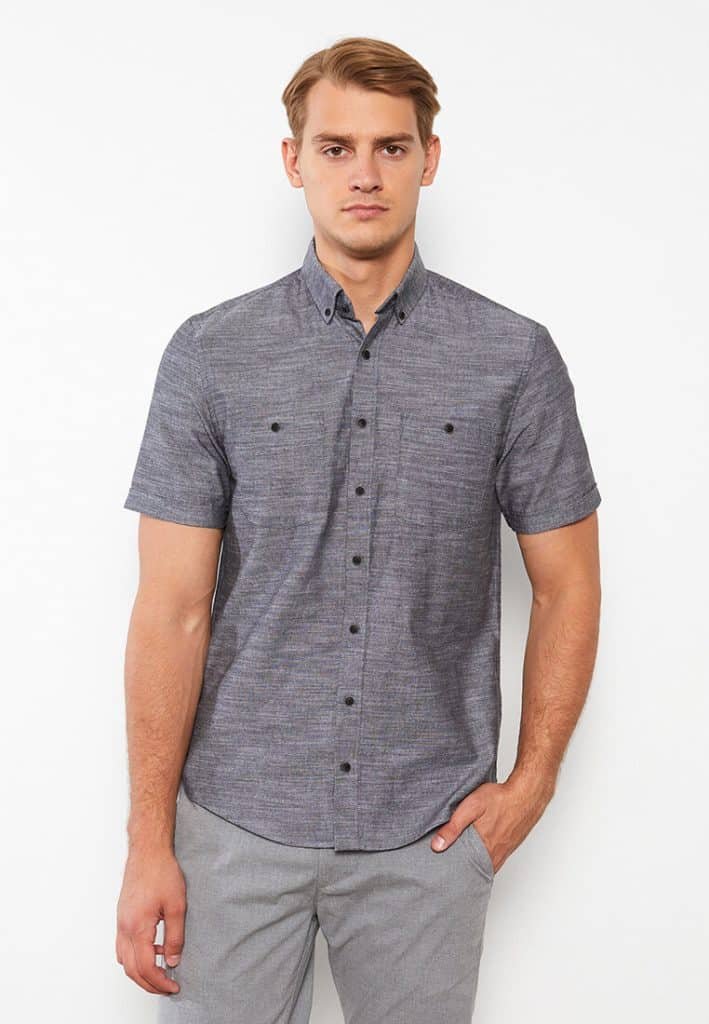
Source: Zalora
Poplin shirts have a ribbed texture. Like the Oxford shirt, it is wrinkle-resistant. Because it is thin, lightweight, and feels exquisite, it is compared as being similar to silk. Now, there are Poplin shirts made from blended silk, Tencel, and cotton fabrics.
These shirts are slightly see-through, so they require a lining underneath. They are thin and smooth. So try matching a neutral-colored poplin shirt with striking bottoms. For example, a black poplin shirt would look best with black trousers.
And for accessories, a dashing burgundy tie and polished loafers would tie the look together. Remember, this shirt is thin. So if it gets chilly, you can wear a blazer over it.
3. Dress Shirt

Source: iStock
Dress shirts are cotton material, breathable, durable, and comfortable. It once had a structured look, collar, cuffs, and front opening. Modern variations now have buttons. The concept of the dress shirt emerged during the Renaissance and Baroque periods.
For a more put-together look, you can try pairing them with chinos, and complete the look with loafers. Or roll up the sleeves and add a v-neck sweater for a timeless style.
4. Cuban Collar Shirts
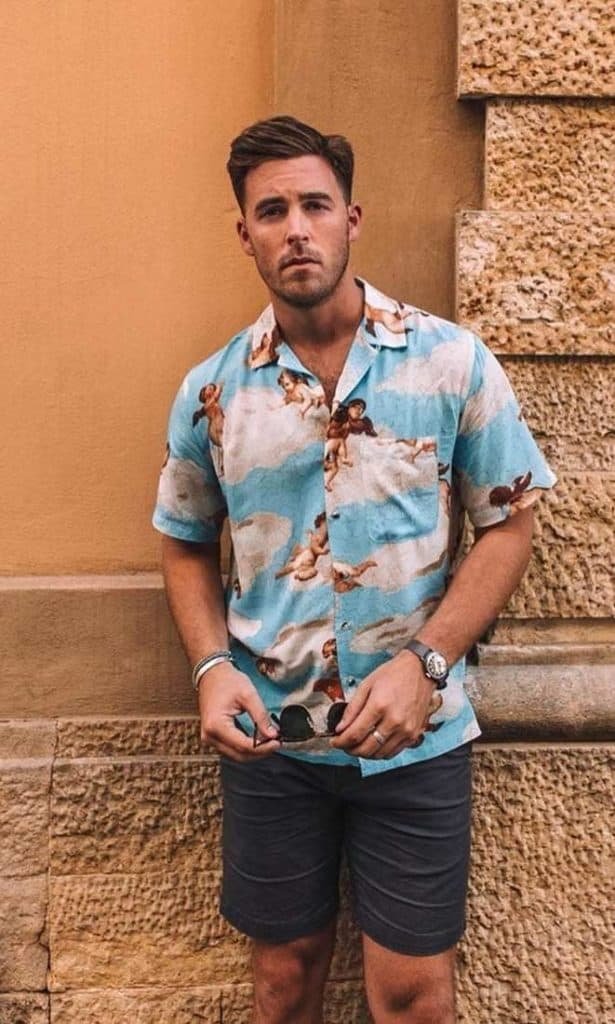
Source: Pinterest
Commonly associated with the Guayabera in Yucatán culture, the Cuban Collar shirt has deep roots. Cuban shirts transitioned from the Mandarin collar to the Cuban collar.
The Cuban collar features a boxy hem, giving the illusion of a broader collar and shoulders. Along with that, it also has short sleeves and an open collar. With lightweight fabrics like linen, cotton tencel, or terry cloth, it is ideal for summer.
You can pair your Cuban collar with slacks for a sleek aesthetic look. You can also accessorize with your favorite bag, watch, and sunglasses. But if you want a more laid-back and refreshing vibe, match your shirts for men with shorts and sandals.
5. Hawaiian Shirt
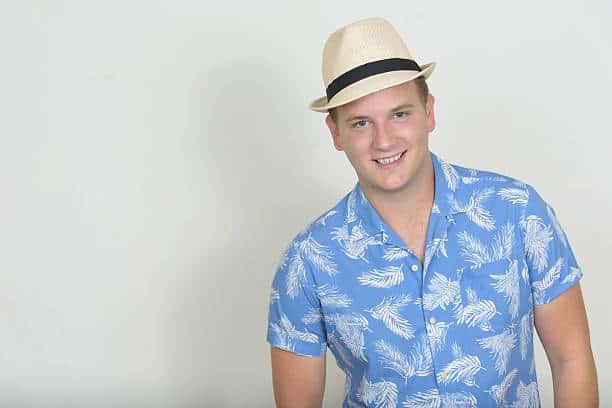
Source: iStock
The Hawaiian shirt dates back to the 1920s when Japanese women started adapting kimono fabric for shirts for men. The “aloha shirt” gained popularity for its vibrant floral patterns and tropical motifs.
It became a local souvenir, so surfers and beachgoers alike wore this whenever on a hot, sunny day. These men’s shirts are a must-have travel companion for tropical vacations. So in summer, Hawaiian shirts will be your best friend.
Hawaiian shirts are best paired with lightweight linen pants or swim trunks. Complete the look with comfortable sandals or flip-flops to match the laid-back vibe.
6. Overshirt

Source: Pexels
Overshirts were first worn as workwear in the 19th century. “Shackets” (a combination of “shirt” and “jacket”) are another term for this men’s shirt. These are versatile garments designed for functional workwear and military use. They offer a relaxed, outdoorsy aesthetic.
The most commonly used fabric for overshirts are cotton or canvas. Now, there are variations made from wool and twill. That’s why this men’s shirt is ideal for several occasions. You can wear different overshirts for occasions, practicality, and functionality.
You can pair an overshirt with denim jeans or canvas pants, and add combat boots for a rugged look. You can also combine this men’s shirt with slacks and loafers. Or if you prefer, you can add accessories like belts, watches, and beanies for a casual ensemble.
7. Flannel Shirts
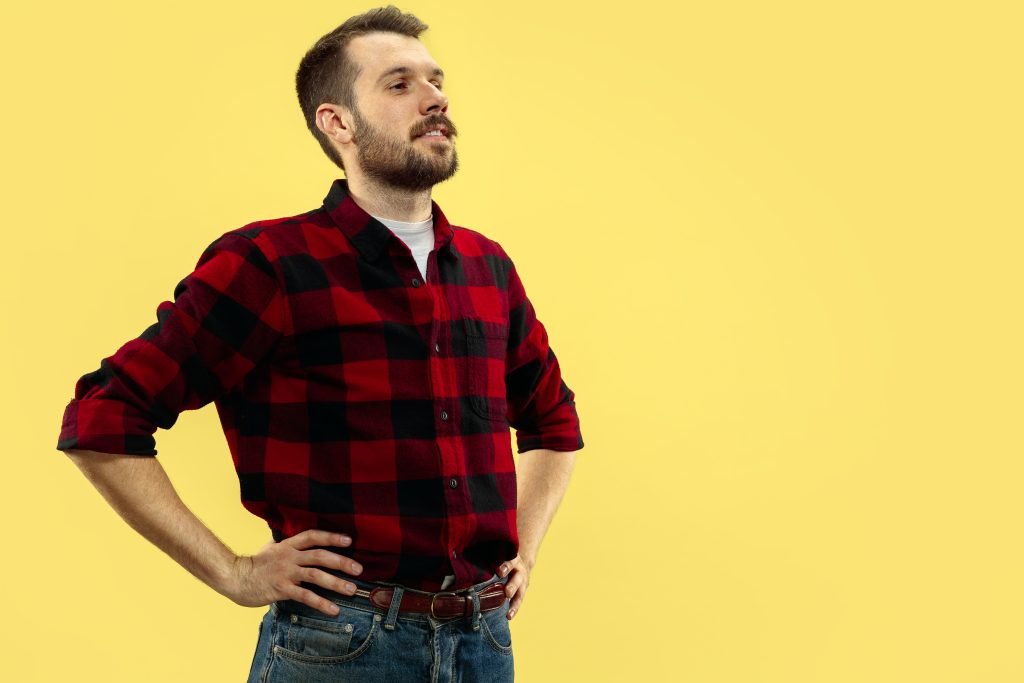
Source: FreePik
Flannel shirts are more than plaid, lumberjack, and punk aesthetics. Since Wales has wet and windy winters, the Welsh created the fabric to keep them warm. These types of shirts for men are made of soft, woven wool fabric with a brushed surface.
Known for providing warmth and durability, they are ideal for cold and damp climates. The best thing about flannel shirts is their plaid print. It elevates your outfit without the extra effort. Flannel shirts are suitable for both work and outdoor activities.
This men’s shirt found its way into punk fashion. From grunge bands to punk rock, it is still considered a wardrobe staple today. To make a statement, you can wear your flannel shirt over a white tee and ripped denim jeans. You can add a pair of suede boots and wear a beanie as well.
8. Office Shirts
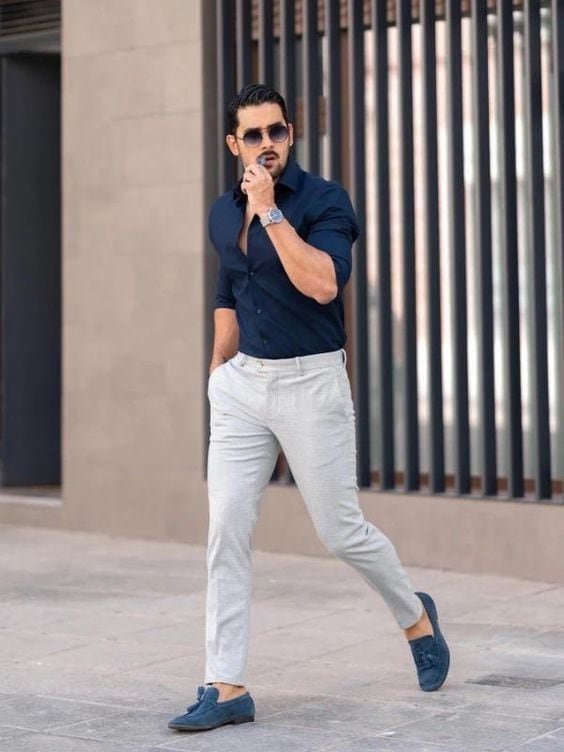
Source: Pinterest
The office shirt is a workplace staple. It is commonly used as corporate attire but has also become common in semi-formal settings. This shirt for men is typically made from fine cotton. It feels lighter and softer on your skin, so it’s comfortable to wear.
Office shirts are formal apparel that has a more structured design. Most of these have a tapered collar and sleek buttons. So for a comfortable casual look, you can layer an office shirt by adding a sweater for warmth and extra style.
Since online meetings are common now, you can wear an office shirt and a colorful tie, while still in your pajamas. That way, you’ll look professional, while feeling at home.
9. Linen Shirts
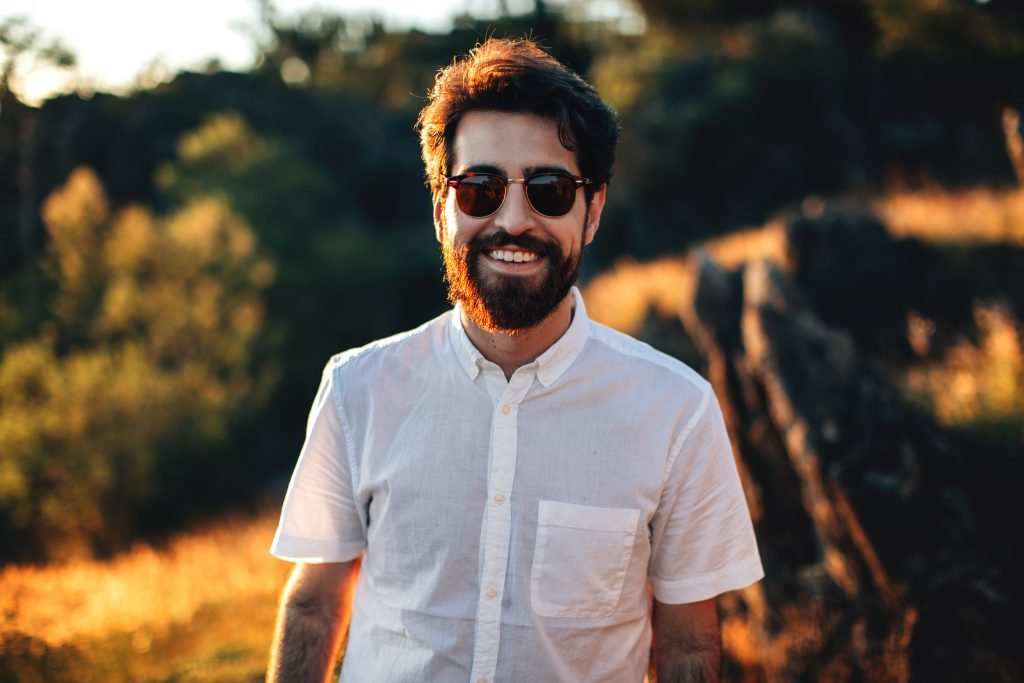
Source: Unsplash
The most ancient preserved garment is a shirt made of linen. It had small fringes that formed the neck opening and side seams.
A linen shirt is airy and breathable. It rarely picks up odors and is light to carry during travel. These shirts for men feels crisp to the touch. However, it is soft and feels comfortable on the skin. Additionally, a linen shirt is hypoallergenic. So there’s no need to worry about itching.
Linen shirts are best worn during the summer. Since light colors feel cool on the skin, these are best for a tropical getaway. Under the scorching heat of summer, you can pair a light-colored linen shirt with khaki shorts.
10. Chambray Shirts

Source: FreePik
Chambray shirts originated in 18th-century Cambrai, France. It was around the same time that linen overtook the fabric industry. The cambric cloth was dense but had a lightweight weave. It involved weaving short, undyed linen fibers.
These are notable for their strength and durability. But the men’s shirt was also cool and breathable. Designed for workwear, it was ideal to wear a cambric shirt while working manual labor. Today, they have become a staple in casual and semi-formal fashion.
To rock a chambray shirt, find one that fits well, ensuring it’s neither too baggy nor too tight. Pair it with pants that complement your shirt. Complete the look with accessories and comfortable sneakers.
11. Mandarin Collar Shirt
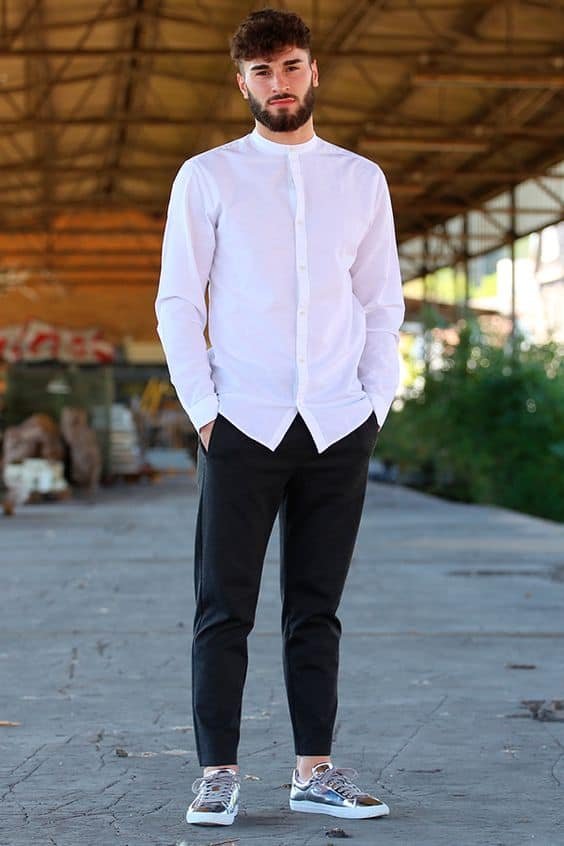
Source: Pinterest
The Mandarin collar shirt coined the nickname “Mao collar.” These types of shirts for men had a round collar without tabs. This shirt relies on its minimal appearance, so it looks its best if its flaps don’t overlap. Later, traditional gold and silver buttons were later replaced by knot buckles.
This man’s shirt is usually made of linen or cotton. The stand-up collar gives the collared shirt a sophisticated aspect to it. So to wear a Mandarin collar shirt, opt for a subtle pattern.
Although you can choose a striking color, the best colors are cool to the eye, like blue, light grey, or white. Then, you can pair it with tailored pants, and consider adding a sports coat for a cooler appearance.
12. Henley Shirt
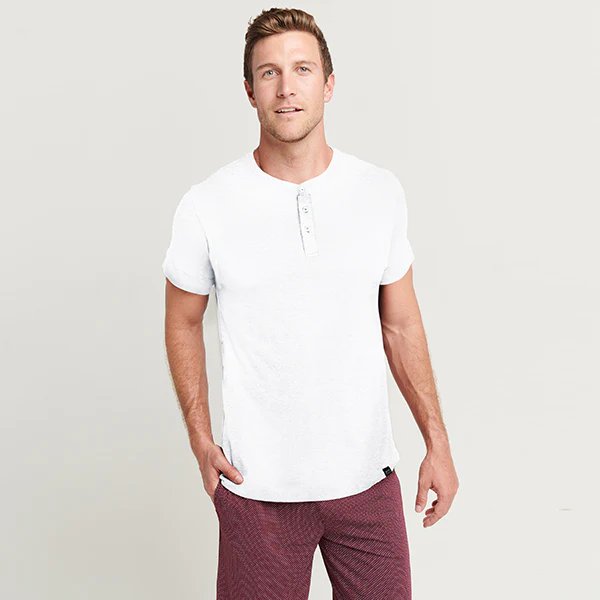
Source: Jockey USA
These shirts for men get their name from the first Henley-on-Thames. Henley shirts gained popularity during the Henley Royal Regatta, a prestigious rowing event. It was a knit shirt, featuring a buttoned placket with two or three buttons at the neckline.
During this time, England used Henley shirts as undergarments. These undervests were the first collarless underwear. It was easy to wear and breathable.
So, to complete your Henley shirt look, finish the look with sneakers or canvas shoes for a relaxed vibe. Additionally, you can layer it under a lightweight hoodie to stay warm and stylish in cooler weather.
13. Short Sleeve Shirt
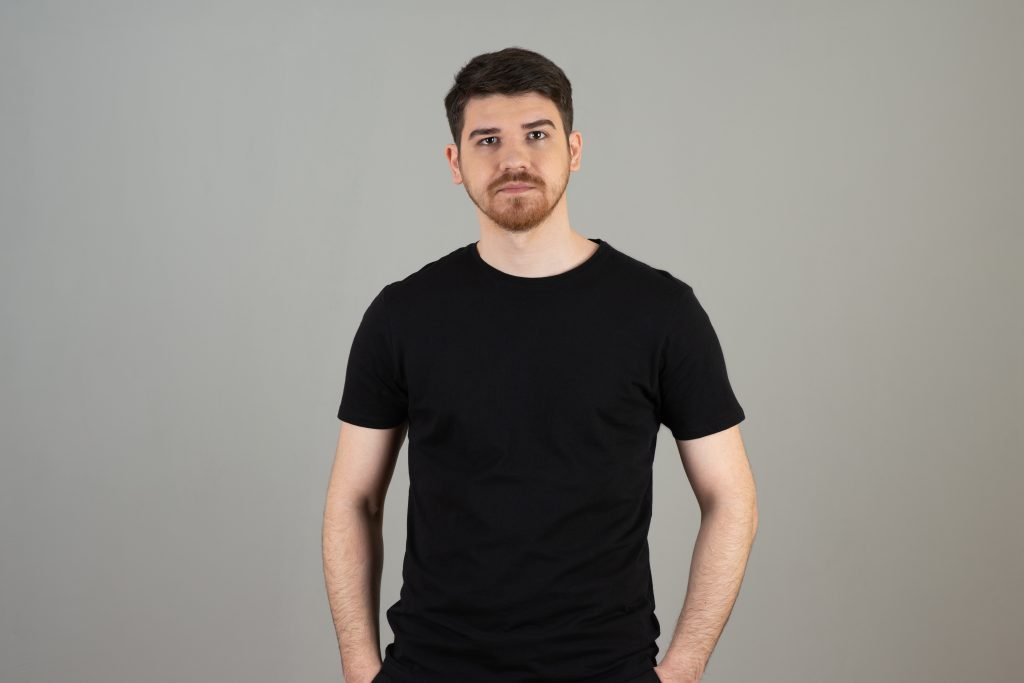
Source: FreePik
Short-sleeve shirts or t-shirts first started as an undergarment worn under regular clothes. They come in different fabrics, like cotton, polyester, or rayon jersey. These types of shirts for men are versatile and come in several colors and prints.
The best short-sleeve shirt to wear is a structured shirt that compliments your frame and enhances your features. But if you want a more relaxed and casual look, a white cotton tee and dark-washed denim jeans are the way to go.
14. Denim Shirt
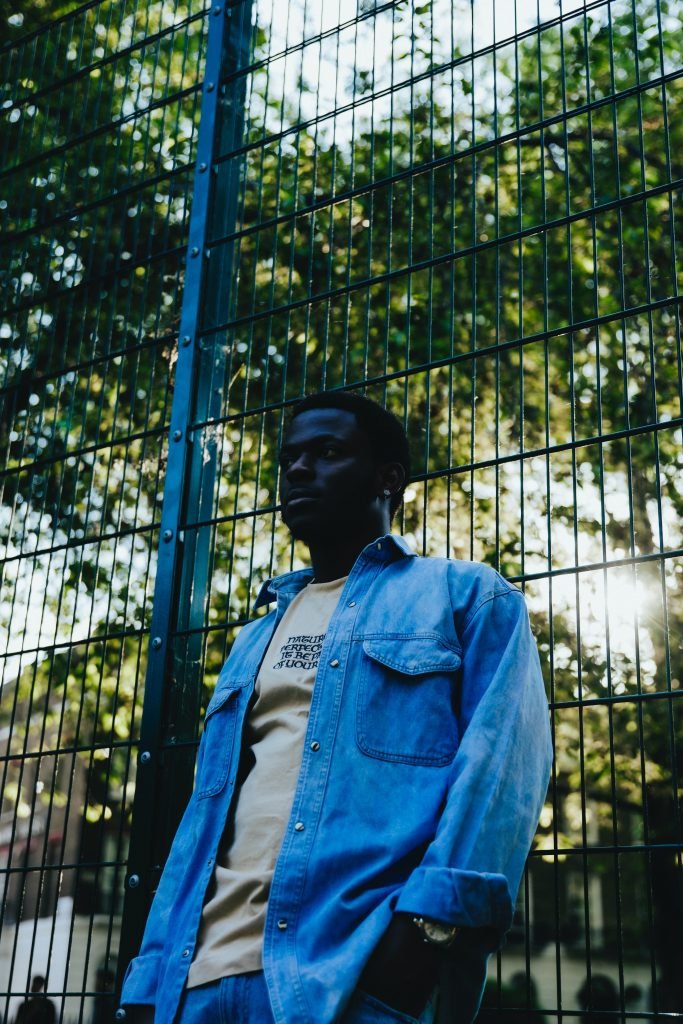
Source: Pexels
Denim was originally a cotton twill cloth. It was made of wool and silk. Before, it was rampant with miners and mechanics. However, Levi Strauss paved the way for denim with the invention of the first blue jeans and copper rivets in 1873.
With smart casual on the rise, denim shirts became a wardrobe staple. It varied in colors, from light to dark. When wearing a washed-out denim shirt, pair it with khaki pants and white sneakers. But with dark-washed denim, you can pair it with dark gray pants and brown loafers.
15. Tuxedo Shirt
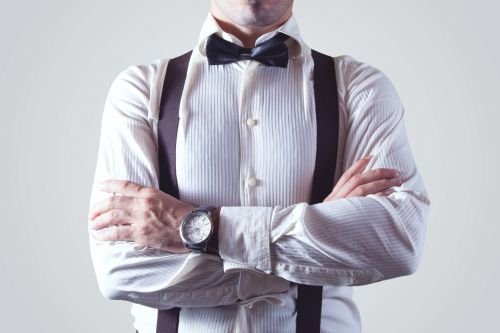
Source: NeedPix
Henry Poole & Co. first introduced the tuxedo as a tailless blue silk “smoking jacket”, with matching trousers. During the Autumn Ball in Tuxedo Park, upstate New York, the tuxedo was quite popular at the time. According to some, this event attributed to how tuxedos came to be.
Tuxedo shirts come in various variations. This includes the bib front, stiff wing collar, or French cuffs. They eventually became essential for black-tie events. So for such, you can pair them with black trousers or midnight blue pants, add a bowtie, and you’re ready to make a statement.
16. Utility Shirt

Source: Pinterest
During the 1940s, the government wanted to produce clothes that “make do and mend.” It was common to see civilians in similar outfits, creating a sense of uniformity among the community. They rationed their clothes, along with their food. So they didn’t have many options.
Designed to withstand manual labor, utility shirts feature sturdy fabrics. Denim and twill, reinforced stitching, and functional pockets are its key elements. It was popular then but continued to evolve in later years. It became fashionable and inspired several designers.
This men’s shirt offers durability and utility, making it a practical choice. You can wear utility shirts for various adventures, like fishing, hiking, and hunting. So pair them with your favorite cargo shorts or outdoor pants, and lace up your combat boots.
Conclusion
Shirts are the perfect apparel to make a fashion statement. Whether formal wear or casual attire, these types of shirts for men will have you hooked.
As a fashion brand, it’s critical to add shirts to your collection. Not only does it provide a wide selection, but it also enhances your brand’s image. So when creating your brand collection, diversity is crucial.
And if you’re planning to include these men’s shirts in your brand’s collection, contact us today.



















